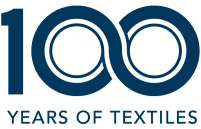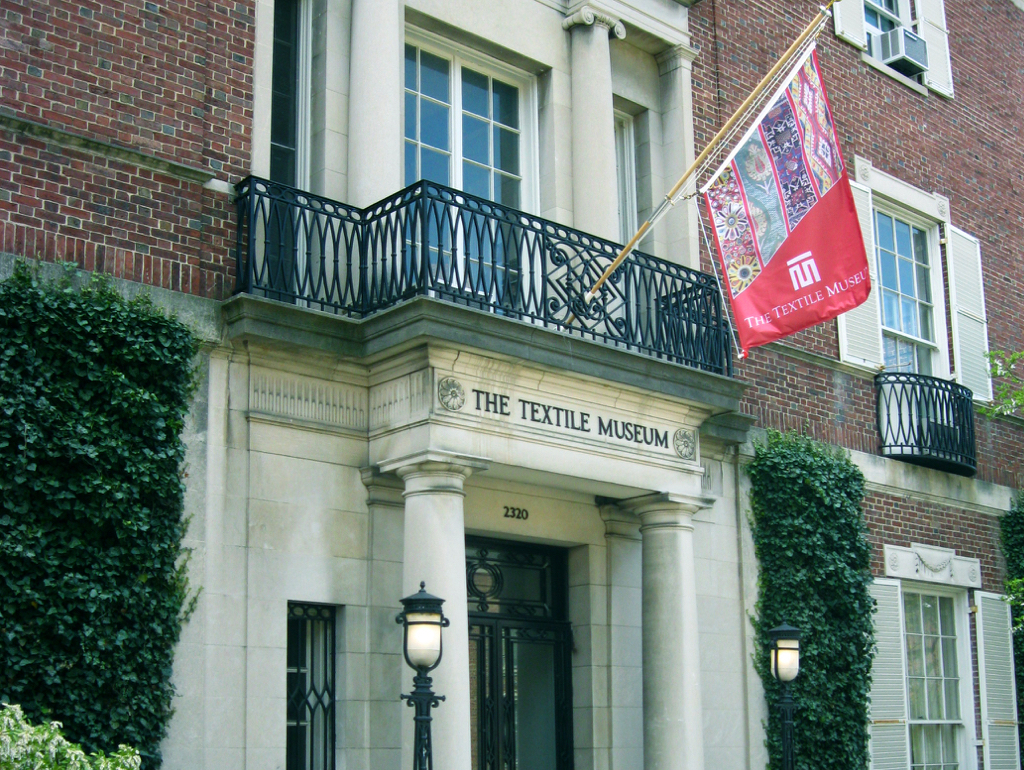MEDIA CONTACTS:
Angela Olson, olsona gwu [dot] edu (olsona[at]gwu[dot]edu)
gwu [dot] edu (olsona[at]gwu[dot]edu)
The George Washington University
Chita Middleton, cmiddleton textilemuseum [dot] org (cmiddleton[at]textilemuseum[dot]org)
textilemuseum [dot] org (cmiddleton[at]textilemuseum[dot]org)
The Textile Museum
Washington, D.C.—The Textile Museum and the George Washington University today announced an affiliation whereby The Textile Museum will move to the George Washington University’s Foggy Bottom campus to become a cornerstone of a new museum scheduled to open in mid-2014.
Exhibitions and programs will be presented to the public in a custom-built, approximately 35,000 square foot museum building located at G and 21st Streets, bearing the names of both The Textile Museum and the George Washington University Museum. The new museum will include dedicated galleries for The Textile Museum, with increased exhibition space compared to its present facilities. Until the new museum opens, The Textile Museum will continue operating at its current location.
In addition to the new museum, the university today announced that it will construct a 20,000 square foot conservation and resource center on its Virginia Science and Technology Campus in Loudoun County, Va., for the study and care of The Textile Museum and the university’s collections. This center will include storage facilities, a conservation laboratory, and facilities for access to the collection.
The affiliation with the university will allow The Textile Museum to expand its rich tradition of scholarship, education, and fostering cultural understanding as it broadly integrates its activities into the far-reaching GW academic community.
“The collaboration between the world-renowned Textile Museum and the George Washington University will create unparalleled opportunities for students, researchers and scholars as well as for the general public,” said GW President Steven Knapp.
The affiliation with GW comes at a time of stability and success at The Textile Museum. Recent achievements include the never-before-seen collection of Central Asian ikat textiles in the exhibition and publication: "Colors of the Oasis: Central Asian Ikats." This exhibition will soon travel to the Seattle Art Museum and Museum of Fine Arts Houston. Other achievements include the engagement of a new, younger audience with the popular PM@ The TM after hours program and an increase in collaborations with the Washington-based diplomatic community to further cultural understanding through textile arts. The Textile Museum has accomplished these impressive initiatives while maintaining a balanced budget through a difficult economic period.
“Perhaps the single-most important development for the museum since it opened its doors in 1925, this relationship ensures The Textile Museum’s exciting future with increased access to its superb collection, enhanced scholarly activities, and continued focus on public programs, education, and exhibitions,” said Bruce P. Baganz, president of the board of trustees of The Textile Museum. “This affiliation further enhances the museum’s role as the leader in the key challenge of cultivating successive generations of those who appreciate textiles as art. Moreover, collaboration with the GW community strengthens our physical presence, and in conjunction with GW resources, can lead to fulfillment of the aspiration to be a ‘global information switchboard,’ an endeavor that has applications far beyond the museum itself.”
On the crucial importance of continued financial support, Dr. Baganz said, “There are wide-ranging interest groups who are passionate about The Textile Museum. It is imperative that all continue to support the museum’s activities so that it can continue its distinguished tradition of art, scholarship, publications and educational programs. This ensures the ability to meet the worthy goal of providing every visitor with a unique, personally relevant and memorable
experience.”
In this unprecedented arrangement between a university museum and an existing art museum, The Textile Museum will continue management of its internationally acclaimed collection of more than 18,000 objects, which will be on perpetual loan to the university. The agreement, pending final approval by both Boards of Trustees, also specifies that Textile Museum staff will continue to develop exhibitions and programs that align with the current mission, which will remain the same after moving to the new location.
“This is a truly unique collaboration,” said Ford W. Bell, President of the American Association of Museums. “By combining resources, these institutions increase their reach and impact while The Textile Museum maintains the reputation and identity it has established over the last eight decades. It is a tribute to the present vigor and future promise of The Textile Museum that two organizations of this international caliber were able to maximize their respective strengths.”
The new George Washington University Museum also will include the recently announced Albert H. Small Washingtoniana Collection and Center for National Capital Area Studies, additional galleries and space for academic and scholarly activity, public lectures and other forums, all of which will be integrated into a wide range of academic studies.
About the George Washington University
In the heart of the nation’s capital with additional programs in Virginia, the George Washington University was created by an act of Congress in 1821. Today, George Washington is the largest institution of higher education in the District of Columbia. The university offers comprehensive programs of undergraduate and graduate liberal arts study, as well as degree programs in medicine, public health, law, engineering, education, business and international affairs. Each year, it enrolls a diverse population of undergraduate, graduate and professional students from all 50 states, the District of Columbia and more than 130 countries.
The new George Washington University Museum will foster the study and appreciation of art, history, and culture, both within the university and throughout the global community, through its affiliation with The Textile Museum and through its university collections, including the Albert H. Small Washingtoniana Collection.
About The Textile Museum
The Textile Museum expands public knowledge and appreciation – locally, nationally, and internationally – of the artistic merit and cultural importance of the world’s textiles. Founded in 1925 by George Hewitt Myers, The Textile Museum is an international center for the exhibition, study, collection and preservation of the textile arts. The Textile Museum collection encompasses more than 18,000 objects that date from 3,000 BCE to the present, including some of the world’s finest examples of rugs and textiles from the Near East, Central Asia, East and Southeast Asia, Africa, and the indigenous cultures of the Americas. Included in the collection are extraordinary holdings of the Islamic world and pre-Columbian textiles. The museum’s 20,000 volume Arthur D. Jenkins Library of Textile Arts is among the world’s foremost resources for the study of textiles.



